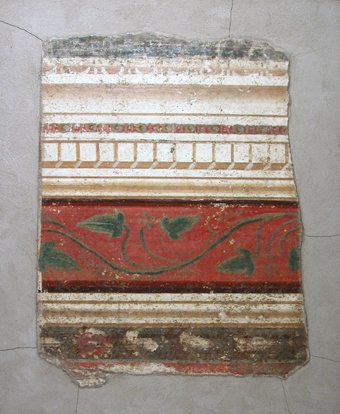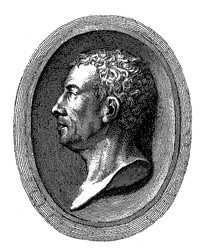Das Freskofragment zeigt ein architektonisches Gebälk. Letzteres besteht, von oben nach unten beschrieben, aus Eierstab, Hohlkehle, Astragal (Perlstab) und Zahnschnitt über rotgrundigem Fries mit grüner Efeuranke. Darunter folgen zwei weitere Profilleisten.
Das gemalte Gebälk bildete offenbar den oberen Abschluß einer Zimmerwand. Die Imitation realer Architektur ist typisch für den zweiten Pompejanischen Stil. Unser Fragment gleicht der Wanddekoration des Cubiculums im sog. Haus der Greifen, lediglich der Eierstab fehlt dort als oberer Abschluß. Das Haus bewahrt heute die älteste erhaltene Wandmalerei des zweiten Stils, der sich dann in der Villa dei Misteri, der Villa in Boscoreale und in der Casa di Livia voll entfaltete.
Das Fragment ist dem frühen, noch eng an den ersten Stil angelehnten, zweiten Stil (1. Jh. v. Chr.) zuzuschreiben.
en

